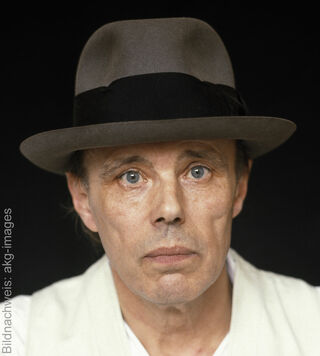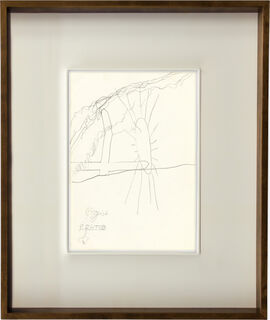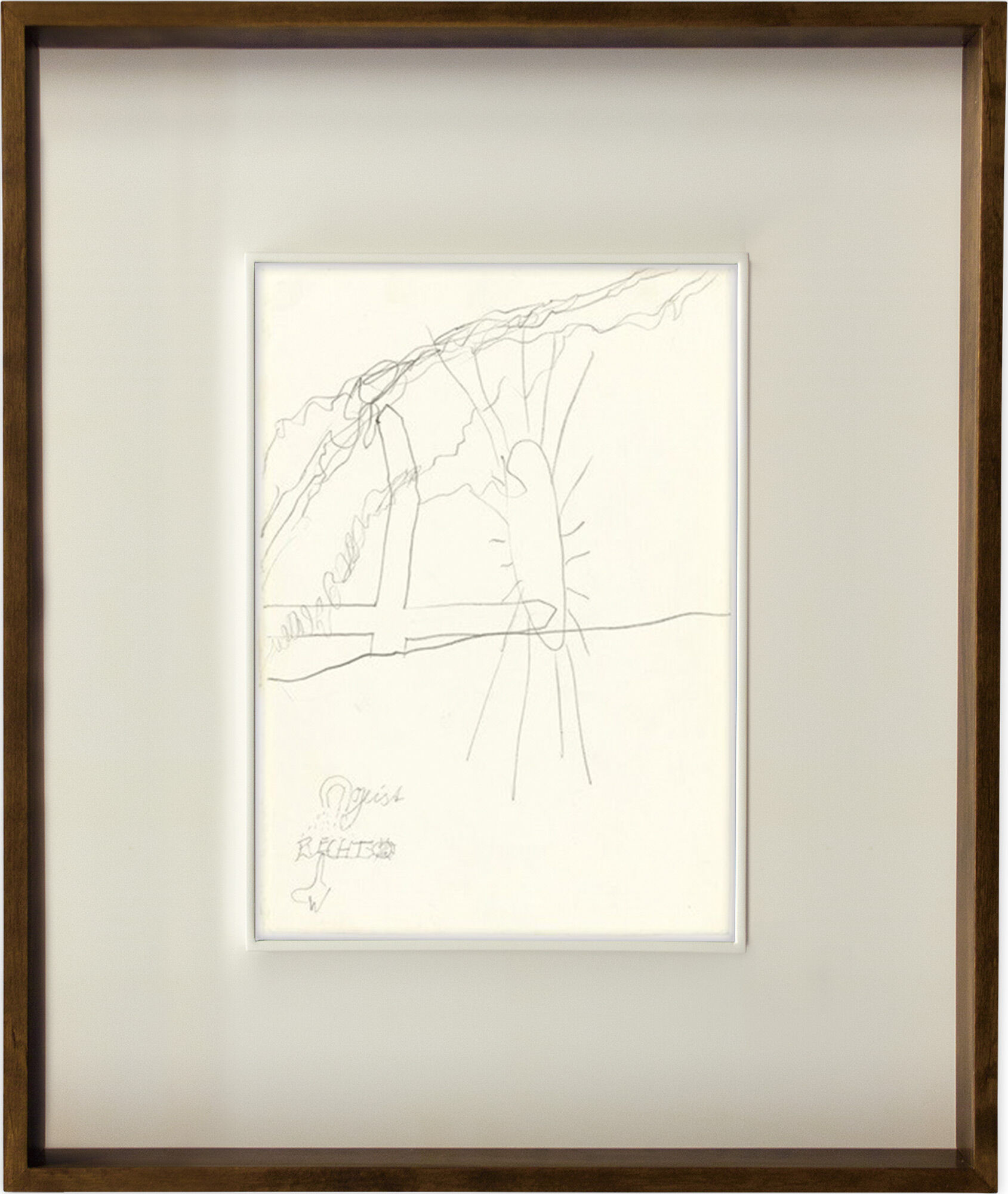Picture "Vision" (1968) (Unique piece)


Picture "Vision" (1968) (Unique piece)
Quick info
unique piece | signed | dated | inscribed | pencil on paper | framed | size 47.5 x 38 cm
Detailed description
Picture "Vision" (1968) (Unique piece)
This work from 1968 - executed in pencil on paper - presents the viewer with a vision of the artist Joseph Beuys that is not easy to decipher or interpret. The motif seems like an archaic sign language composed of organic and inorganic forms and shapes. This unique piece from the earlier creative phase of the painter, graphic artist and sculptor represent a popular collector's item for every Beuys enthusiast.
Pencil on strong paper, 1968. Signed, dated and inscribed on the back. Motif size/sheet size 29.6 x 21 cm. Size in frame 47.5 x 38 cm as shown.

About Joseph Beuys
1921-1986
Sculptor, draughtsman, painter, performance artist and art theorist - Joseph Beuys is undoubtedly one of the most important artists of the 20th century. Already during his lifetime, he became a legend with his hat and aviator vest, paving the way for contemporary art today.
However, one typically stands in front of his works like a dying duck in a thunderstorm. And this metaphor actually fits quite well. Animals appear repeatedly in the art star's self-developed mythology, for example, in the environmental art "Lightning with Stag in Its Glare", which is permanently installed in the Museum of Modern Art in Frankfurt am Main, Germany. The monumental installation consists of 39 metal casts of clay models that are arranged in a room that has been specially designed for the piece. The work compromises dark heaps of clay, symbolising amorphous primaeval creatures, in front of a six-metre-high triangular form cast in bronze, which thins out towards the top and symbolises lightning. The depiction of a stag, cast from an old ironing board resting on "wooden legs", stands out with its silvery matt surface. A kind of creation scene?
Beuys commented that the stag was a component of nature for the ordinary consciousness and raised the following question: "But how does nature now react if every future nature will be a man-made nature?" It is the 80s, Beuys' visionary reflections go far beyond the boundaries of the art world. With the figure of the stag, which also appears very frequently in his drawings, the artist opens up a whole world of possible interpretations. He also establishes art-historical references, for example, to German genre painting and such nature scenes that usually show the stag roaring majestically in front of a lush green forest, a popular motif in German living rooms that has nothing to do with the idea of art that Beuys conveyed. It is difficult if not impossible, and certainly unintentional, to fully understand the artist's sensually enigmatic works.
With Beuys‘ art, it is about feeling something. As is always the case with art.
Hand-signed prints by Beuys are rare and highly sought after: top-ranking investment objects.
A one-of-a-kind or unique piece is a work of art that has been personally created by the artist. It exists only once due to the type of production (oil painting, watercolours, drawing, etc.).
In addition to the classic unique pieces, there exist the so-called "serial unique pieces". They present a series of works with the same colour, motif and technique, manually prepared by the same artist. The serial unique pieces are rooted in "serial art", a type of modern art, that aims to create an aesthetic effect through series, repetitions and variations of the same objects or themes or a system of constant and variable elements or principles.
In the history of arts, the starting point of this trend was the work "Les Meules" (1890/1891) by Claude Monet, in which for the first time a series was created that went beyond a mere group of works. The other artists, who addressed to the serial art, include Claude Monet, Piet Mondrian and above all Gerhard Richter.


